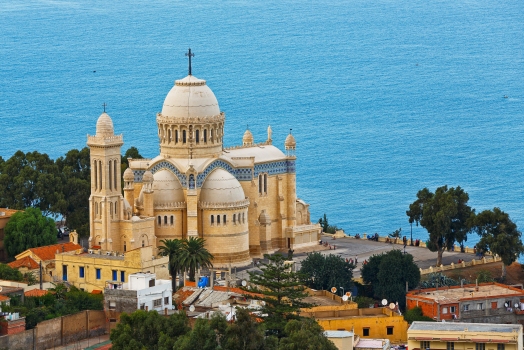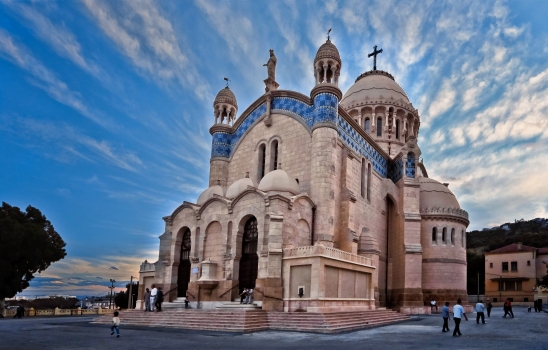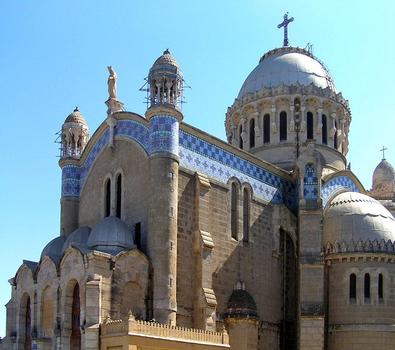General Information
| Name in local language: | Basilique Notre-Dame d'Afrique |
|---|---|
| Beginning of works: | 14 October 1855 |
| Completion: | 1872 |
| Status: | in use |
Project Type
| Function / usage: |
Basilica |
|---|---|
| Architectural style: |
Neo-Byzantine |
| Structure: |
Dome |
| Material: |
Masonry structure |
Location
Technical Information
There currently is no technical data available.
Excerpt from Wikipedia
Notre Dame d'Afrique (Our Lady of Africa) is a Catholic basilica in Algiers, Algeria.
History
It was Louis-Antoine-Augustin Pavy, who served as the Bishop of Algiers from 1846 to 1866, who paved the way for its construction. The basilica was inaugurated in 1872, after fourteen years of construction. It was founded by Charles Lavigerie. Its architect, Jean-Eugène Fromageau, who had been appointed the chief architect for ecclesiastical buildings in French Algeria in 1859, employed a Neo-Byzantine style. Its floor plan is unusual as the choir is situated on the southeast instead of the usual east side of the building.[ who?]
The basilica contains 46 stained glass windows installed in the 19th century. They were blown out during a bombing of the area in April 1943 and have been restored twice since the end of World War II.
In 1930 an organ, built in 1911, was donated to the basilica by the wife of the late Albert Weddell, a wealthy English resident in Algiers at Villa Georges and friend of the French composer Camille Saint-Saëns who had inaugurated the organ at Weddell's home.
The basilica was damaged by the 2003 Boumerdès earthquake. A reconstruction project was initiated by Archbishop Henri Teissier in 2003, but work on the project didn't start until the spring of 2007. The total cost of restoration was 5.1 million euros. The project took three years to complete.
Location
Notre Dame d'Afrique is on the north side of Algiers, on a 124 m (407 ft) cliff overlooking the Bay of Algiers. It formerly could be reached from the city centre by a cable car. It can be considered to be the counter-piece to the church of Notre-Dame de la Garde on the other side of the Mediterranean.
Importance
Its symbolic and religious importance can be summed up by the inscription on the apse: Notre Dame d'Afrique priez pour nous et pour les Musulmans ("Our Lady of Africa, pray for us and for the Muslims").
Text imported from Wikipedia article "Notre-Dame d''Afrique" and modified on June 3, 2020 according to the CC-BY-SA 4.0 International license.
Participants
- Jean-Eugène Fromageau (architect)
Relevant Web Sites
- About this
data sheet - Structure-ID
20022395 - Published on:
23/07/2006 - Last updated on:
24/05/2020







